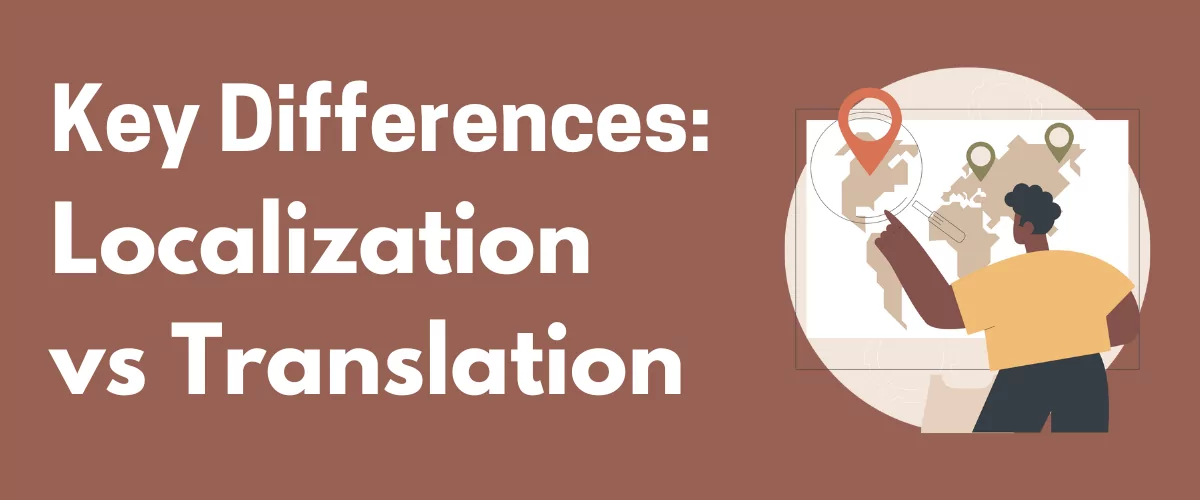
In this post
While creating a high-converting multilingual site, one important task you’ll have to deal with is choosing between localization vs translation. Though both terms are often confused, localization and translation are unique concepts with a significant number of differences.
Identifying the key differences between both processes before diving into either of them will help you execute them more effectively. This has become increasingly important, especially for businesses looking to expand their audiences globally.
In essence, website localization is a much more comprehensive process that involves different components. Translation happens to be one of those components. While translation deals with adapting your site’s message (mostly text) to a new market, localization focuses on delivering a wholesome experience that meets their cultural expectations.
In this article, we’ll examine all the key differences between localization vs translation. You’ll also learn how to use a WordPress multilingual plugin like TranslatePress for website translation and other localization processes.
TranslatePress Multilingual
Let’s start by explaining what translation is.
What Is Website Translation?
In general terms, translation is the process of converting text from one source language to another destination language. The whole idea of accurate translation is to retain the exact meaning of a text in the original language it was translated from.
When it comes to WordPress websites, this can include text, image text, and gettext strings within a plugin or theme. One of the easiest ways to achieve this is to use a plugin like TranslatePress. The tool allows you to add and edit translations on your site’s front end. This way, even newbies can translate an entire website in little time.
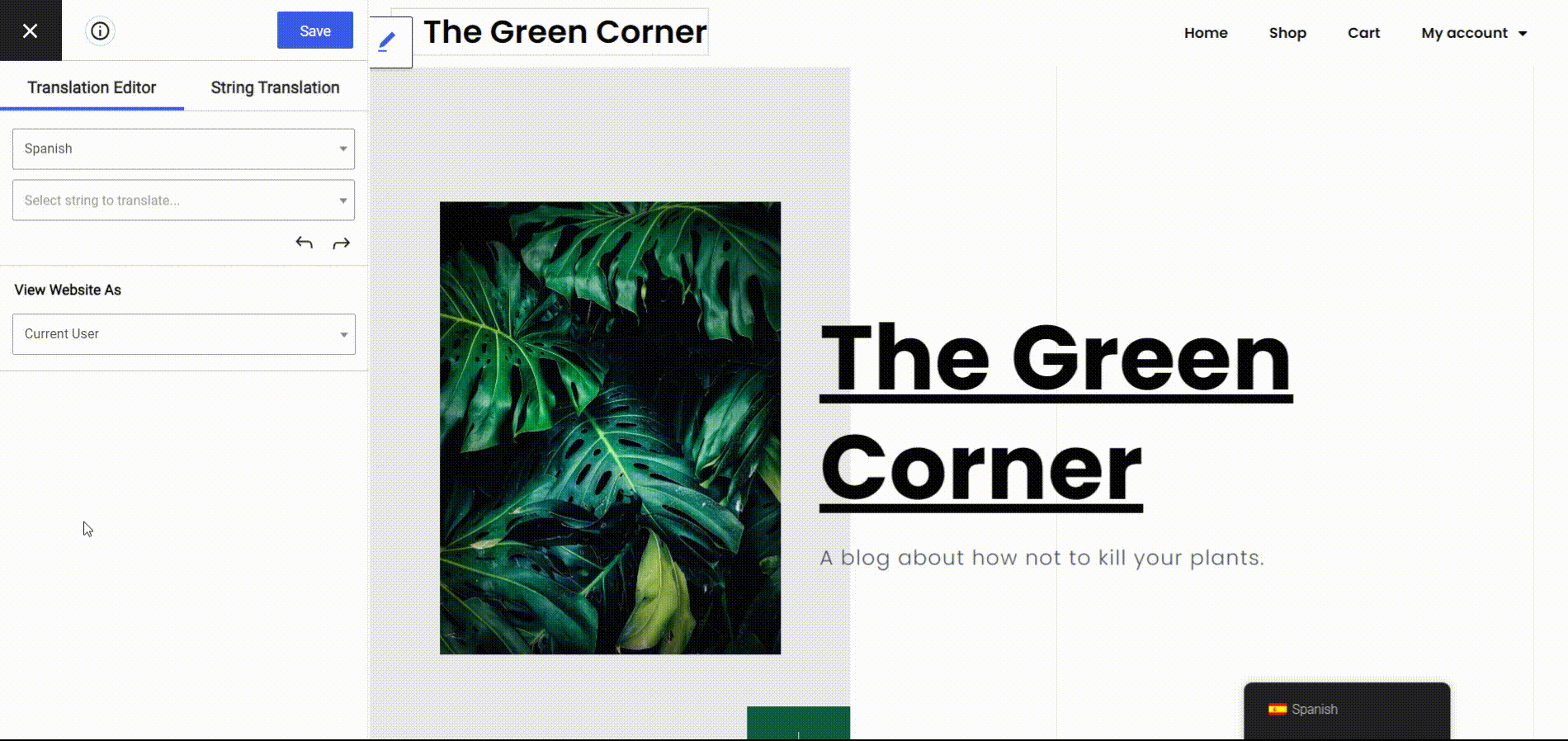
Once you’ve translated the text, the content and context of the message remain the same sitewide, irrespective of the cultural expectations of the target audience.
For example, translating ‘pie de manzana’ from Spanish to ‘apple pie’ in English sounds just about right. But the average Briton shopping in their local store might take a while to figure out that you mean ‘apple crumble’. While this isn’t really a deal breaker, most of your site visitors ideally want to interact with your content in the language they feel most comfortable with.
Translation is generally literal in nature. On its own, it’s often a good start for multilingual websites. It might get the job done if you only want to communicate some technical details or instructions, use few graphics or photos, or avoid advanced use of idioms and marketing content.
But if you’re looking to maximize profits in multiple markets, it’s very important to move beyond translation to localization.
Why?
Linguists generally agree that certain details are often ‘lost in translation.’ The idea behind localization is to identify and address these missing communication details so as to connect better with the locale and boost your business’s appeal.
What Is Website Localization?
As early mentioned, localization caters to a much more complicated need to adapt a product or business to an entire market, region, or locale. Marketing involves quite a number of region-specific details that translation alone doesn’t address. The key idea is to deliver your users the best experience possible, irrespective of their geographic location.
Additionally, the approach to translating text is quite different when localization is involved. After translating into the destination language, certain words, phrases, and expressions must be adapted in a manner that engages the target audience best.
In certain circumstances, you may even need to modify entire sections of the website to match the taste and existing trends in that market. A good example is a global business that offers different services in different regions. Here, you’ll need to display only content or services that are available in the designated region during localization.
Apart from contextual translation, some other important factors need to be addressed during website localization. Let’s take a look at some of the most important ones.
What Does Localization Involve?
Irrespective of the nature of your site, localizing it properly will require several processes. As we mentioned earlier, localization goes beyond text and content. The major idea is to meet your target audience’s cultural expectations at all levels. Achieving this can affect every part of the website.
This may sometimes require you to adopt different content types or even marketing campaigns on various localized versions of your site. Anything to get the visitor’s attention on a deeper subcultural level.
But in general, localization should affect these key elements of your website.
Cultural, Regional, and Linguistic Context
The first target of any website localization effort is to provide context for a local customer base. And this often begins with textual translation. When localizing your site, it’s highly important that you dig deeper and focus on translating your content to make it as culturally relevant as possible.
This generally involves considering many linguistic factors. For example, certain translations may either be offensive or simply don’t sound native to the local audience in the region. If you’re looking to break into a new market, localization requires you to prioritize these culturally and regionally exclusive elements of your website.
This is why when localizing site content, you cannot afford to translate text literally. It would make sense to engage the services of a native speaker who not only understands the predominant language but also the cultural expectations of the audience. This relates to the local nuances, terminologies, and slang that natives in the region can easily identify with.
We already talked about how localization caters to variations of languages like the English language. Localized versions of your site for your American, Australian, or British audience should vary in terms of spelling, word usage, and other linguistic factors. The same thing goes for Spanish for Latin American, and Mexican audiences.
Proper localization might also sometimes require you to even tweak important brand elements like your brand name. Coca-Cola’s localization effort in China serves as a perfect example here. The brand name adopted in the region is pronounced as “Kekou kele” and translates literally as “Tasty fun”.
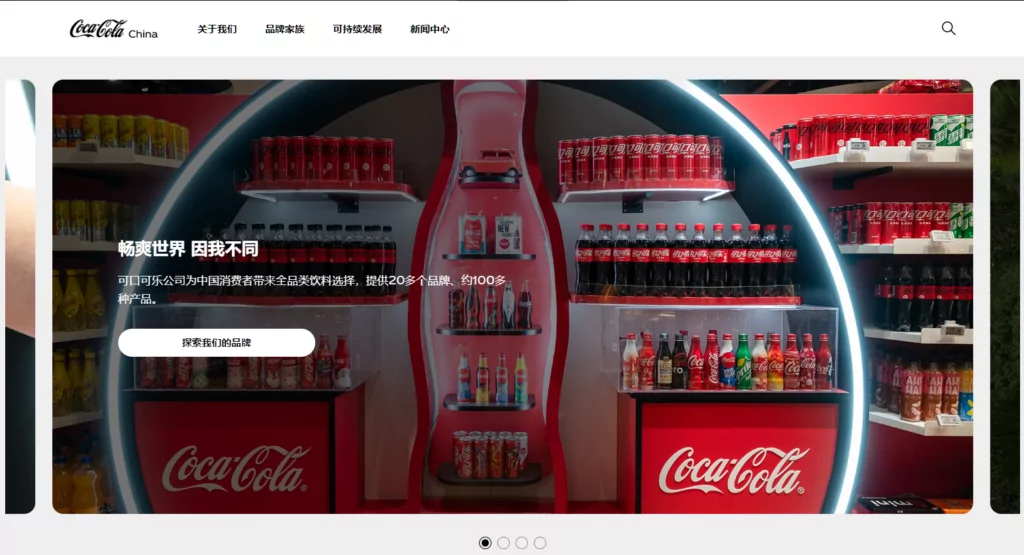
Chinese consumers will generally get a positive feeling each time they visit the site. Considering that shopping is an emotional activity, this can easily lead to more sales and site engagement. All thanks to effective brand name localization.
Website Design
Once you’re done with the textual content, the next most important part of website localization is design. And this cuts across every part of your site’s design. From the page layout to the choice of color, every UI/UX design element is important.
Here are some of the design considerations you need to bear in mind during localization and why:
- Layout. Different languages use different alphabets and characters. As a result, some translated texts will need more or less space than others. Even when the alphabets are similar, some words are longer when translated to other languages. Some languages like Arabic also use right-to-left (RTL) scripts. This means there may be times you’ll need to adjust your pages’ or the entire site’s layout to accommodate these differences. This is another major distinction between translation vs localization.
- Colors. Colors can also mean different things to different local audiences. You would have to research how each of your target audiences perceives certain colors. This makes sense so as not to evoke the wrong emotions when they surf your site.
- Visuals and other graphics. Of course, this begins with translating the text in your images. Then there are times when it makes sense to replace images completely to pass a stronger message. For example, you can add images of Chinese and Nigerian models to the Chinese and Nigerian versions of your site respectively. Shapes, object sizes, icons, and lettering styles are equally important too. Anything to better appeal to the local culture.
In general, design is also a cultural concept. This is why it should be factored into localization too.
Currency, Calendar Systems, and Other Units of Measurements
This element of localization is particularly important in online stores. Things like currency, units of measurement, and date systems vary according to country and region. Typically, an online shopper ordering items from the US would prefer to see prices in US dollars.
If you own a WordPress site, WooCommerce multicurrency plugins can help you save a lot of time when adding this functionality to your site. Using these plugins, you can choose to only display prices or also charge for items in multiple currencies. They also let you add the most popular payment methods in each region.
US shoppers would also prefer to see units of measurement like pounds (lb.) and inches for weight and length. In contrast, a buyer from New Zealand would relate better to kilograms and meters. Localization should ideally cater to these important expectations buyers have when shopping, even from a global brand.
Non-eCommerce websites aren’t left out either. The calendar and time system on each localized version of your site should reflect the norm in that specific region. Some countries stick to the MM/DD/YYYY format while others use DD/MM/YYYY. You should also pay attention to which clock system to use: the 12-hour or 24-hour format.
Privacy Laws and Legal Considerations
Of course, your site’s privacy policy page should reflect information that is compliant with the law in every region. For example, regions in the EU take their GDPR cookie laws seriously. California’s CCPA is another good example. As a rule of thumb, localization ensures that your site meets each of these legal requirements.
Technical Factors (Media, SEO, Automatic Translations)
Finally, technical factors like multilingual Search Engine Optimization (SEO) are localization efforts that will benefit your site’s traffic tremendously. This typically involves editing the URL slug of each localized page, enabling multilingual sitemaps, and translating your site’s metadata.
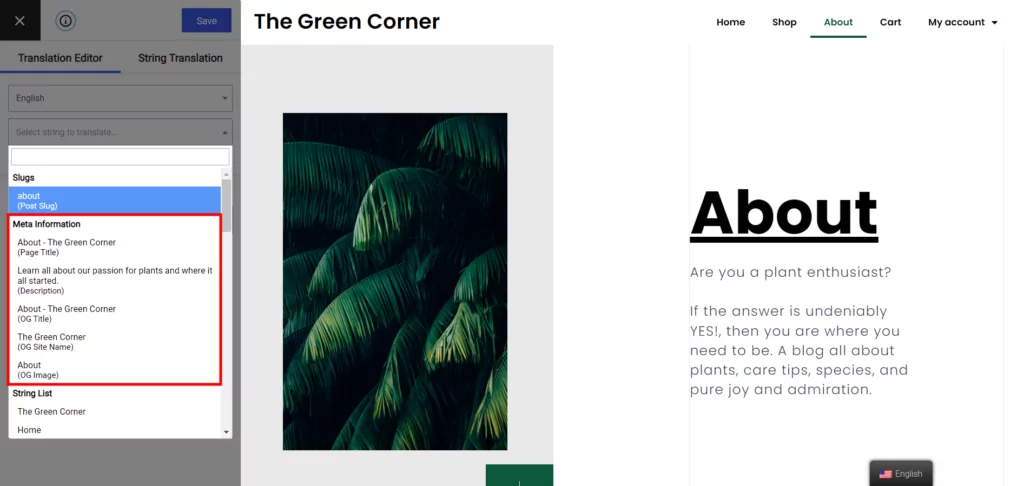
Fortunately, TranslatePress makes it very easy to take care of each of these multilingual SEO elements. The plugin has an SEO pack add-on that works with other SEO plugins out of the box.
You can also detect a site visitor’s preferred language automatically and redirect them to the corresponding localized version. When it comes to user redirection, TranslatePress Automatic User Language Detection add-on does the job perfectly.
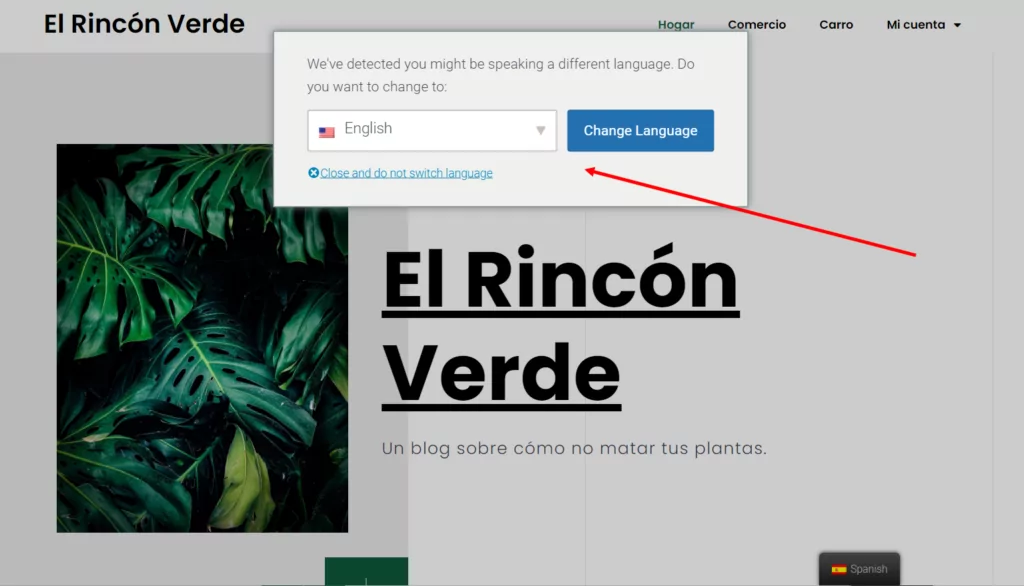
If you’re in a hurry or have a lot of content on your site, TranslatePress also supports automatic translation via DeepL or Google Translate. You can expect quick and accurate translations with either service.
Website localization is a really broad topic and can include anything required to adapt your business to regional markets. This explains the majority of differences between localization vs translation.
But why go through all this stress?
How Localization Can Help Your Business
Localization offers virtually the same benefits as multilingual SEO. The key difference is that localization helps you maximize your return on investment (ROI) in creating the multilingual site. This is the major justification for localization vs translation.
By localizing your website, you get to:
- Boost revenue and establish your brand in new markets. The easiest way to increase your market share as a business owner is to expose your products and services to a wider audience. A significant amount of research backs this up. On average, localization yields 2500% ROI. This is a whopping fraction no business would choose to miss out on.
- Outdo your competition. A good percentage of global businesses already invest in site translation. On the other hand, only the top players do professional localization. Localizing increases your chances of reaching more markets than competitors in your industry are.
- Build a good brand reputation and loyalty. Multinational businesses sometimes make serious gaffes when they try to market in regions that are new to them. Efforts dedicated to localizing content can help you remain culturally sensitive and avoid situations that damage brand reputation. Local customers can also see your efforts and be more inclined to stay with your products and services.
- More high-quality traffic and engagement. Beyond having your site in multiple languages, localization means getting a culturally accurate message to each of your audiences. This often translates to much-improved traffic and engagement.
Considering how much profit website localization can bring to your online business, it makes sense to follow through with the rather arduous process. If you’re looking to implement it for your WordPress site, we’ve written a detailed localization guide to help you with that.
Real-Life Examples of Translation vs Localization
Deciding whether to simply go for translation vs localization can be quite a difficult task. The easiest way to resolve this challenge is to examine case studies of businesses already engaged in either process. That helps you make data-driven decisions to justify the investments in localization or otherwise.
It’s important to bear in mind that translation is common to all multilingual sites. So, there are generally many examples of site translation all over the internet. The major debate is about when it makes sense to take things a step further and localize. Rio Bank is a good example of a bank that stopped at translation.
Rio Bank
This finance sector example presents an ideal example of a relatively ‘local’ business that doesn’t require website localization. The Southern Texan community bank translated its site from English to Spanish to cater to its Spanish-speaking customers.

This development came as the bank’s business grew. But the management discovered that customer feedback wasn’t sufficient for proper marketing and decision making. They then tried to resolve this by sending out a survey that was conducted in Spanish. The surge in the client response was almost instantaneous.
Rio Bank took the lead and decided to translate its website to Spanish. The site’s dual-language browsing experience on their site played a major role in the bank’s development. At the moment, nearly 90% of the bank’s client base is Spanish-speaking.
This case study gives quite some insight into how local businesses have no critical need for localization. In most multi-lingual states like Texas where the cultural expectations are pretty similar, translation often serves the purpose.
Notion and Spotify
For truly global businesses like Spotify and Notion, there’s hardly any debate choosing between localization vs translation. Especially for AI-based subscription services like Spotify and YouTube, personalization is at the core of the user experience. And you can only achieve this level of personalization with the help of website localization.

The streaming creates a truly immersive customer experience by offering localized music suggestions. Of course, they don’t rely only on content localization. But it sets the foundation for how the service is run.
The same goes for Notion. From its inception, the software has catered to an international community of users. And localization has always been a critical component of their success.
Should You Translate or Localize Your Site (Popular Use Cases)?
Still undecided whether to opt for localization vs translation? We’ve already established that the only way to justify investing in localization is by examining your business’s specific needs. At this point, asking certain questions might prove helpful in making the right decision:
- Do you have customers in multiple countries and regions?
- What’s your budget for marketing in these regions?
- Is your product or service consumer-focused or business-focused?
- What are other key players in your industry doing?
Talking about industries, here’s a look at the industries where localization has proven to be a necessity:
- Software as a Service (SaaS)
- Mobile app development
- Gaming
- Entertainment
- eCommerce
- Banking and finance (fintech)
- Social networking
On the other hand, it’s always recommended to invest in translation (irrespective of your industry) once you start attracting a multilingual audience.
Localization vs Translation: Building the Ideal Multilingual Site
Creating and maintaining the perfect website for your multilingual audience is an extensive process that requires continuous investment. At a certain stage, you’ll have to choose between localization vs translation. To make the right choice, you’ll need to take the nature of your business and your target audience into consideration.
In general, translation simply requires you to convey the same messaging in different languages. But website localization takes things further by ensuring that you meet the cultural expectations of your target audience. And this involves multiple processes like translation, design modification, legal appropriation, and other technical factors.
If you’re ready to localize your site too, a good starting point is TranslatePress, the multilingual WordPress plugin that makes it a breeze to translate any piece of content on your site, including images, URLs, or SEO elements.
TranslatePress Multilingual
We hope this article has helped you identify the key differences between localization vs translation. Kindly let us know if you have any questions in the comments section below.
If you found this post helpful, please check out our YouTube channel, where we constantly upload short & easy-to-follow video tutorials. You can also follow us on Facebook and Twitter to be the first to know each time we post.


